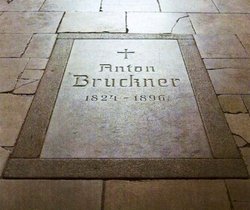Bruckner Symphony No 9 (1896)
Royal Concertgebouw Orchestra Amsterdam
Mariss Jansons conductor
Lars Vogt piano
Barbican Hall, London, 5 April 2014
*****************
The final concert of the Jansons/Concertgebouw Orchestra 3 day residency at the Barbican started with Beethoven's perennnially fresh First Piano Concerto. At the piano was the thoughtful, refined and impish pianism of Lars Vogt. As with the other nights the soloist was beyond reproach. Vogt had particular fun projecting the Beethovenian humour in the first movement coda: teasing the audience with when it was going to end, and striving for maximum surprise when Beethoven throws out fortissimo chords after quiet interludes. The Concertgebouw Orchestra were again attentive and cultured partners, with anything that the clarinet or oboe touched turning to musical gold.
And so the visit concluded with the last Bruckner symphony - the mighty, unfinished 9th. What a composition this is and how very worthy a successor of that other D Minor work - the Beethoven Ninth Symphony. The Barbican crowd was expectant– not least Jansons’ wife and the Concertgebouw Orchestra’s manager seated next to me.
This was again a performance of exalted technical quality and Jansons’ usual attention to detail. Speeds were brisk, and in the Scherzo there was some bizarre handling of tempo at the start which slowed up for the pounding bass notes, before regaining the original tempo as the first violins re-entered. It was obviously prepared as such, but why? The great Adagio developed to a massive climax and the final closing notes were wonderfully sustained by strings and brass. What a sound the Concertgebouw Orchestra produce when on their game.
 |
| Mariss Jansons |
 |
| Bruckner's gravestone |
The applause at the end from the Barbican audience after the Bruckner was long and enthusiastic, but stopped short of a standing ovation. Probably about right. In the end it was the concerti that struck one as closer to ideal. Thinking back over the three partnerships with Lars Vogt, Truls Mork and Frank Peter Zimmermann, I wouldn’t change a single aspect of any of them.

